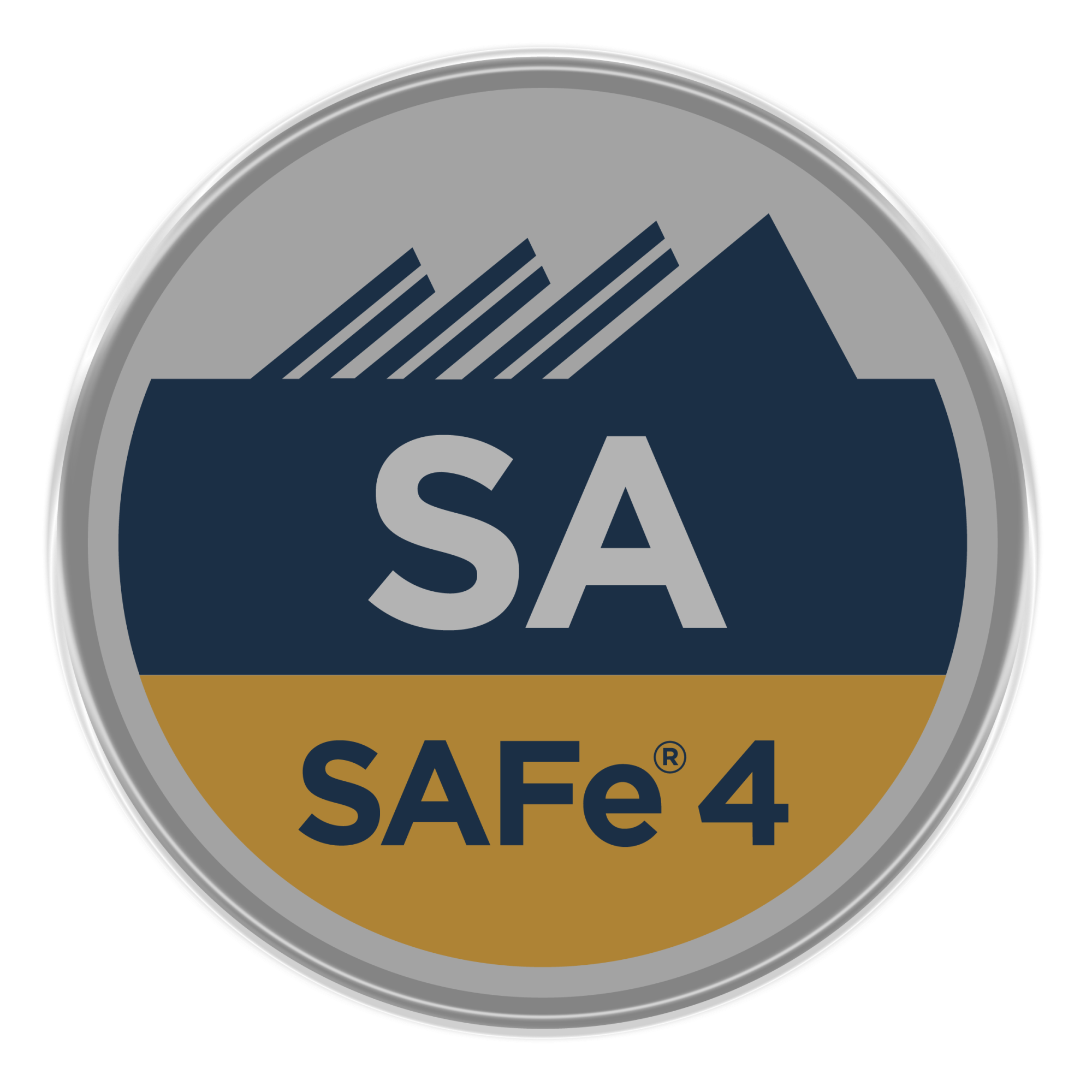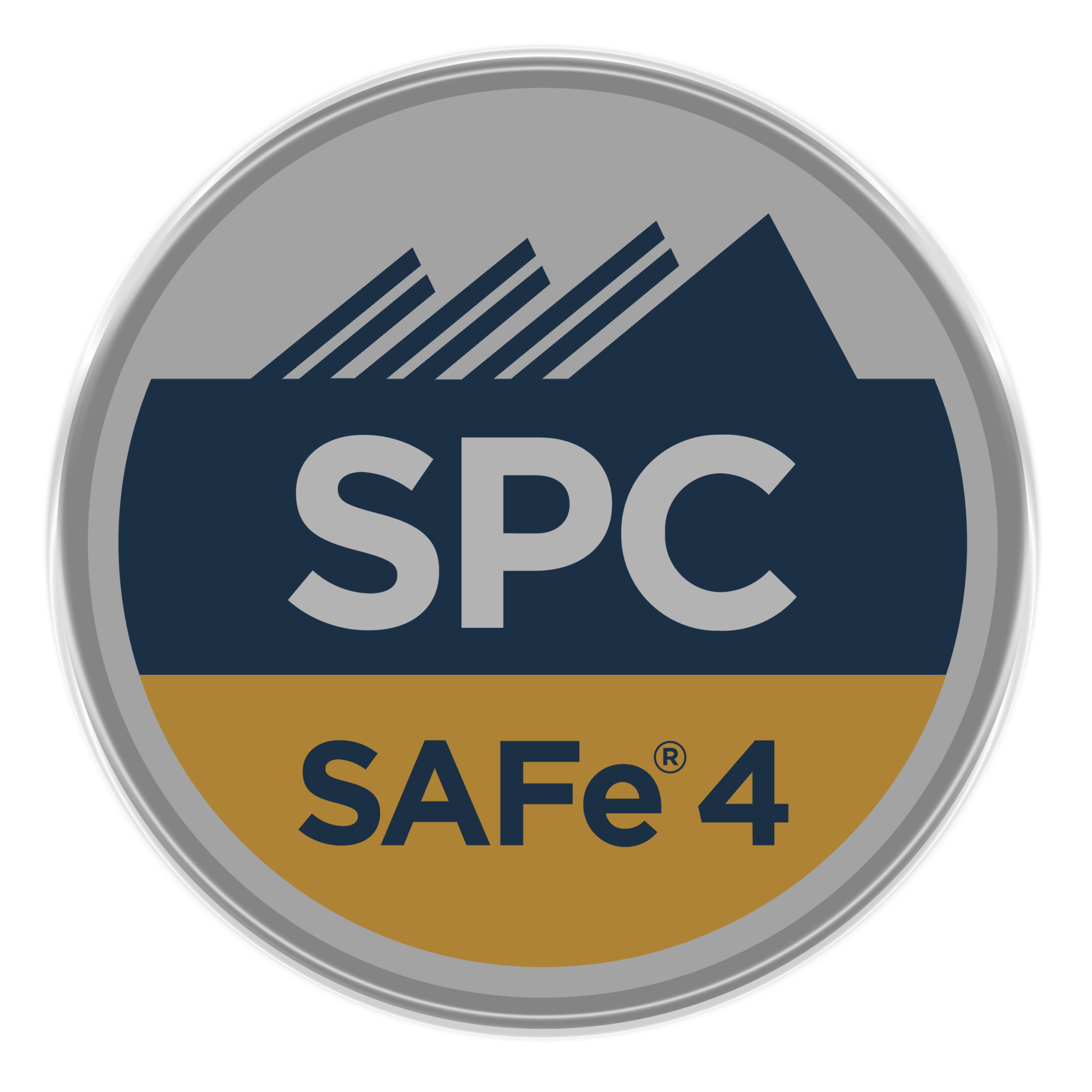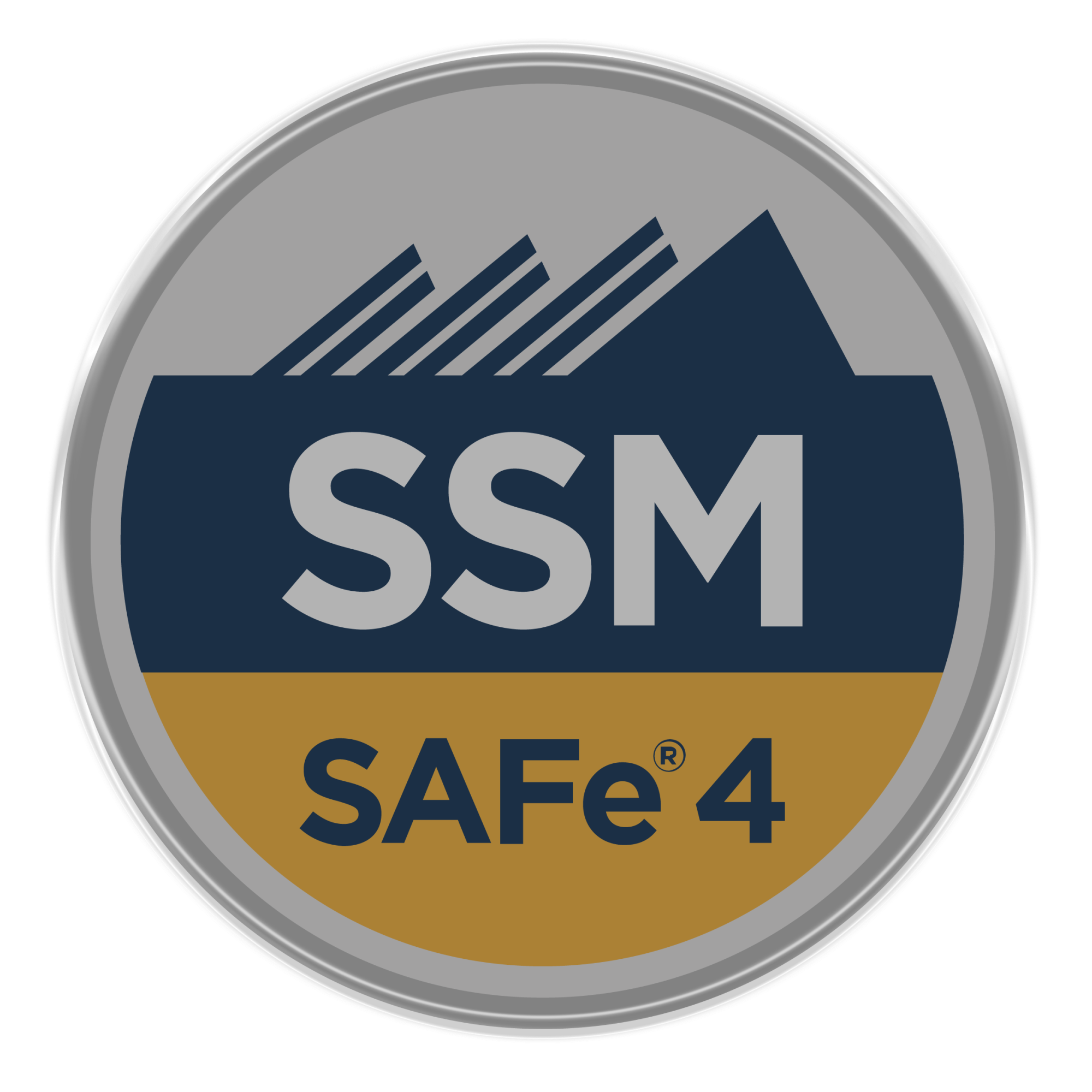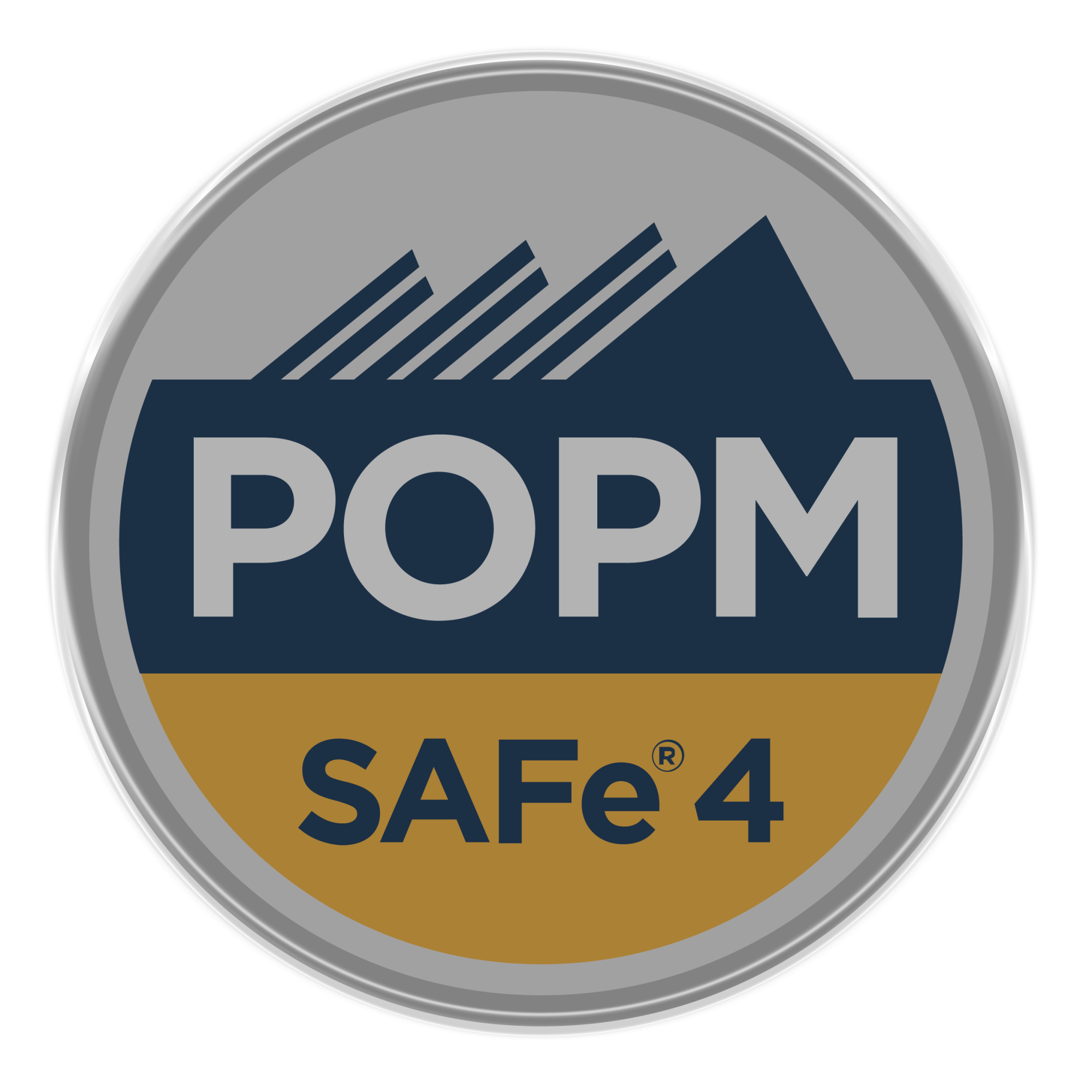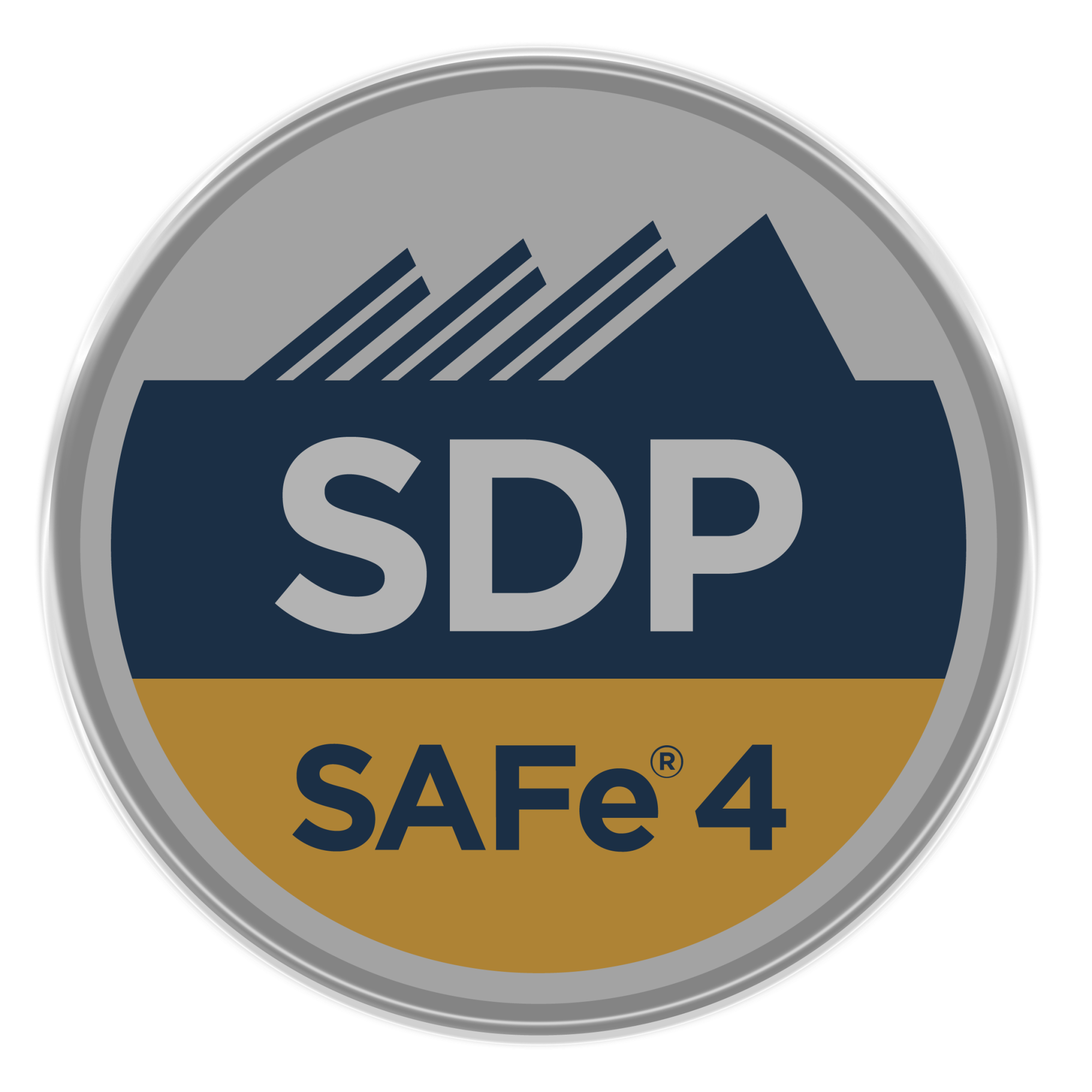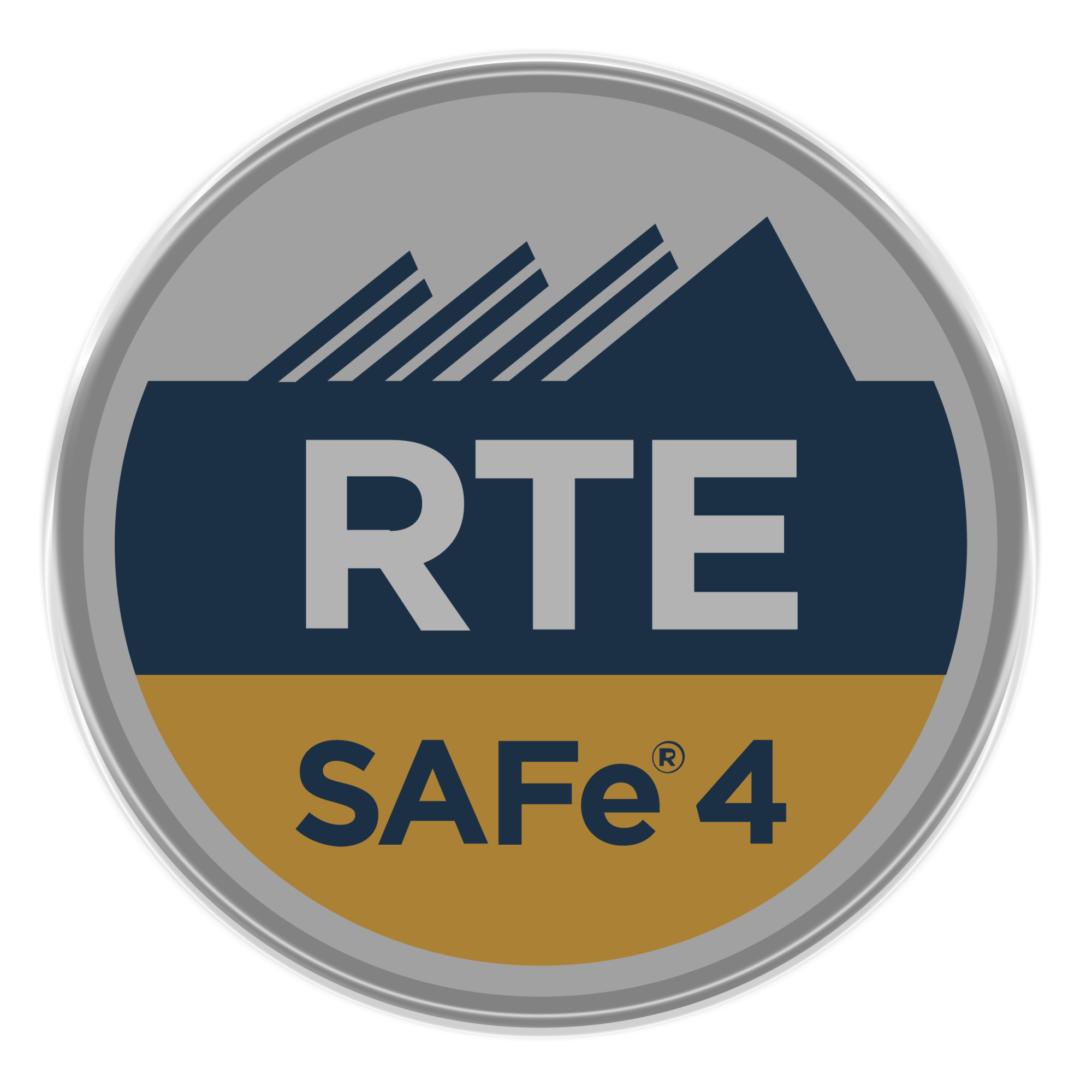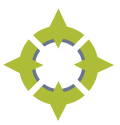SAFe Essential Knowledge
- As the world's leading framework for scaling Agile across the enterprise, the Scaled Agile Framework® (SAFe®) empowers complex organizations to achieve the benefits of Lean-Agile software and systems development at scale.
- SAFe® for Lean Enterprises is a knowledge base of proven, integrated principles, practices, and competencies for Lean, Agile, and DevOps.
A Brief History of SAFe
-
With five major updates since its initial release in 2011, SAFe has grown with the marketplace as we uncover new and better ways of developing software and systems. Although new versions of the SAFe Big Picture are released only occasionally, the Framework knowledge base is continuously updated with new any improved guidance between releases. Please subscribe to SAFe Updates to stay informed of these important changes.
-
Below is a quick view of the Framework's history.
-
Since 2011, hundreds of the world's largest organizations have discovered its benefits: faster time-to-market, dramatic increases in productivity and quality, and more motivated and engaged employees.

How does SAFe do this?
-
SAFe brings together thought leadership from Agile development, systems thinking, and Lean product development into a framework that provides a set of principles, values and guidance for Lean-Agile development.
-
Accelerate your SAFe adoption with the SAFe® Learner Subscription for enterprises.
-
SAFe provides guidance for all the levels of the enterprise that are actively engaged in solution development: Team, Program, Large Solution, and Portfolio. The result is greater alignment and visibility across the organization, connecting the business strategy to execution, enabling better business results, faster, and with a higher degree of predictability and quality.Mastery of the five core competencies for the Lean Enterprise included in SAFe empowers organizations to successfully navigate the transformation to Lean, Agile, and DevOps. This equips them to respond effectively to volatile market conditions, changing customer needs, and emerging technologies.
Five Core Competencies
- Lean-Agile Leadership: Advancing and applying Lean-Agile leadership skills.
- Team and Technical Agility: Driving technical practices including Buit- in Quality, Behavior- Driven development (BDD), Agile testing, Test- Driven Development (TDD), and more.
- DevOps and Release on Demand: Building the Continuous Delivery Pipeline, and implementing DevOps and Release and Demand.
- Business Solutions and Lean Systems Engineering: Building the largest software applications and cyber- physical solutions.
- Lean Portfolio Management: Executing portfolio creating the Vision, Lean budgets and Guardrails, as well as portfolio prioritization, and roadmapping.

Who is using SAFe?
- Over 70% of US Fortune 100 enterprises have Certified SAFe® professionals continuously delivering value on a regular and predictable schedule. These individuals leverage the SAFe Principles to make them more Agile in the marketplace and more competitive in their industry.
- SAFe is a mature framework that translates to across-the-board improvements for both customers and employees. It is supported by the robust, global Scaled Agile Partner Network, a comprehensive, role-based training and certification program, and over 160,000+ Certified SAFe® professionals. The 2016 Annual State of Agile Survey by VersionOne reports that SAFe saw the largest user increase in scaling methods, and is the most popular among scaling frameworks.

Our Mission
- Our core belief is simple: Better software and systems make the world a better place. We help enterprises achieve this mission through the development and publication of the SAFe website, and through our world- class courseware, training, and certification programs.
- As you can see from the numberous Case Studies, many enterprises- large and small- are getting outstanding business benefits from applying SAFe.
- These typically include:
- 20- 50% increase in productivity
- 25- 75%improvements in quality
- 30-75% faster time- to- market
- 10-50% increase in employee engagement and job satisfaction.
- As you can imagine, with these kinds of results, the practice of SAFe is spreading rapidly around the world. Seventy percent of Global 2000 have certified SAFe professionals and consultants on- site, and over 300,000 practitioners have been trained to date.

What's new in
SAFe® 4.6?
Watch the video to find
out more...
We are delighted to announce the introduction of SAFe 4.6, highlighting the introduction of the Five Core Competencies of the Lean Enterprise. They are now the primary lens for understanding and implementing SAFe. Mastery of these five competencies enables enterprises to successfully navigate digital disruption and to effectively respond to volatile market conditions, changing customer needs, and emerging technologies. Click here to read our FAQ on training, certification and more.
Each competency is summarized in a new overview article and is also reflected in related guidance throughout the SAFe website. Each competency is described in the sections below.
Lean-Agile Leadership

Lean-Agile Leadership Related Article Changes
- The prior Lean-Agile Leaders article was combined with the Lean-Agile Leadership competency article
- The SAFe principles have been updated with a redraft of Principle #3 - Assume variability and preserve options
- A new advanced topic article, Evolving Role of Managers describes the changes and ongoing responsibilities of line management in the new way of working
Team and Technical Agility
- Team agility - enables high-performing Agile teams that are organized and operate with basic and effective Agile principles and practices
- Technical agility - provides Lean-Agile technical practices to create high-quality, well-designed technical solutions that support current and future business needs

Team and Technical Agility Related Article Changes
- The entirely new Built-In Quality article describes the five dimensions that enable building in quality - flow, architecture and design quality, code quality, system quality, and release quality
- Product Owner, Scrum Master, Dev Team, and Agile Teams articles were changed to reflect the new guidance and thinking from the Team and Technical Agility competency and their responsibilities in Behavior-Driven Development (BDD)
- New advanced topic articles on:
- Test-Driven Development (TDD) - TDD is a philosophy and practice that recommends building and executing tests before implementing the code or a component of a system.
- Behavioral Driven Development (BDD) - BDD is a Test-First, Agile Testing practice that provides Built-In Quality by defining (and potentially automating) tests before, or as part of, specifying system behavior.
- Agile Testing - is a comprehensive overview of Agile testing strategies using the updated Agile testing quadrants.
DevOps and Release on Demand

DevOps and Release on Demand Related Article Changes
- Deeper and more advanced Continuous Delivery Pipeline guidance that includes mapping the current delivery pipeline and assessing and improving flow with the DevOps and Release on Demand health radar (contains 16 dimensions).
- All new Continuous Exploration, Continuous Integration, Continuous Deployment and Release on Demand articles, which reflect the 16 dimensions of the health radar
- Updates to the DevOps article to reflect changes resulting from the DevOps and Release on Demand competency
- Updates to the Feature article to describe its role in BDD
Business Solutions and Lean Systems
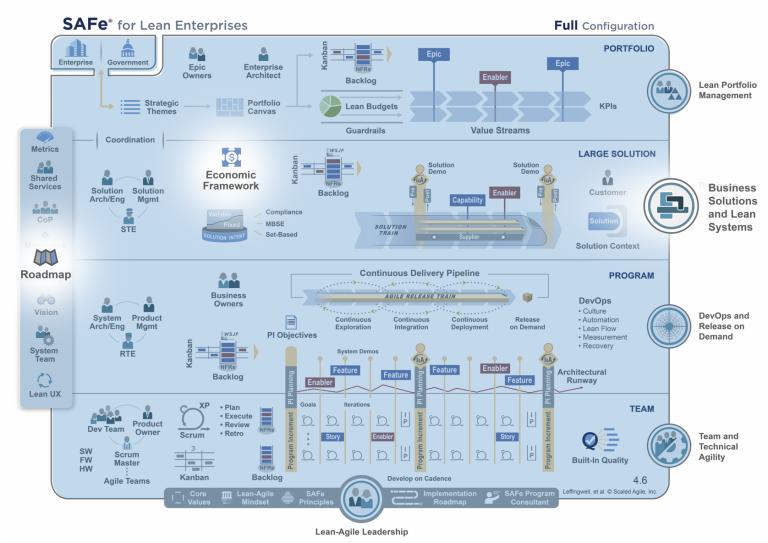
Business Solutions and Lean Systems Related Article Changes
- New specific guidance - eight practices for building large and complex solutions - in the new Business Solutions and Lean Systems Engineering competency article
- New Economic Framework with four primary elements: Operating within Lean budgets and guardrails Understanding solution economic trade-offs Leveraging Suppliers Sequencing jobs for the maximum benefit (using WSJF)
- All new Roadmap article introduces multiple planning horizons and the Solution Roadmap, which provides a longer-term-often multiyear-view, showing the key milestones and deliverables needed to achieve the solution Vision over time. The roadmap also contains new guidance on understanding and applying market rhythms and events.
Lean Portfolio Management
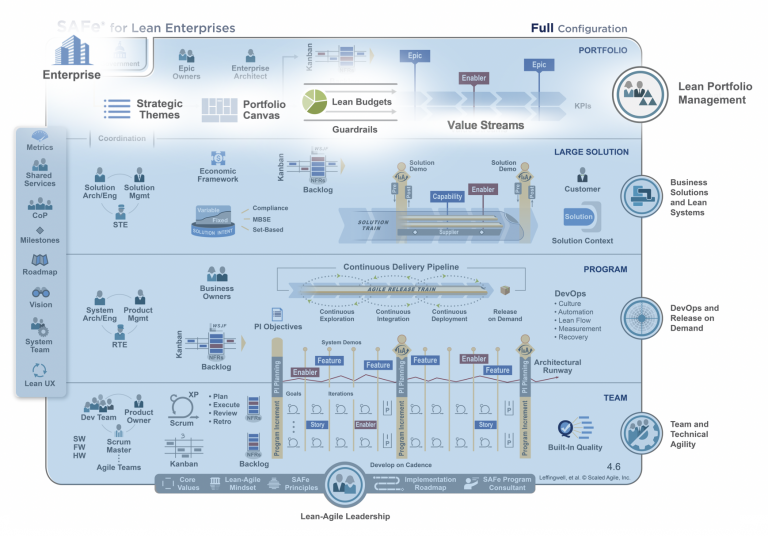
Lean Portfolio Management Related Article Changes
- Updated strategy formulation in the Enterprise article and a definition of the portfolio.
- Updated Strategic Themes resulting from the new Lean Portfolio Management competency.
- New Portfolio Canvas describes how a portfolio of solutions creates, delivers and captures value for an organization. The portfolio canvas also helps define and align the portfolio's value streams and solutions to the goals of the enterprise and provides a basis for how it can be evolved to meet the vision of a future state.
- New Lean Budget Guardrails article provides guidance on how to ensure that the right investments are being made within the portfolio's budget. For example, these guardrails help balance near-term opportunities and long-term strategy, and continuous business owner engagement helps assure that investments in technology, infrastructure, and maintenance aren't routinely ignored.
- Updated Lean Budgets article provides new guidance for moving from traditional budgets to Lean budgets, guiding investments by horizon and applying participatory budgeting.
- Updated Value Streams article, which includes a section on defining value streams and a revised Development Value Stream Canvas that aligns better with the new Portfolio Canvas.
SAFe for Government
- Building a foundation of Lean-Agile values, principles, and practices
- Creating high-performing teams of government teams and contractors
- Aligning technology investments with agency strategy
- Transitioning from projects to a lean flow of epics
- Adopting Lean budgeting aligned to value streams
- Applying Lean estimating and forecasting in cadence
- Modifying acquisition practices to enable Lean-Agile development and operations
- Building in quality and compliance
- Adapting governance practices to support agility and lean flow of value
It's important to note that these recommendations for Lean-Agile adoption in government do not require a different version of SAFe or suggest modifying SAFe terms and practices to fit government protocols. In fact, experienced practitioners in government services have reported that they achieve the best results when the SAFe model and terminology are used without modification.
SAFe Implementation Roadmap
- SAFe DevOps
- Agile Software Engineering
- SAFe System and Solution Architect



































